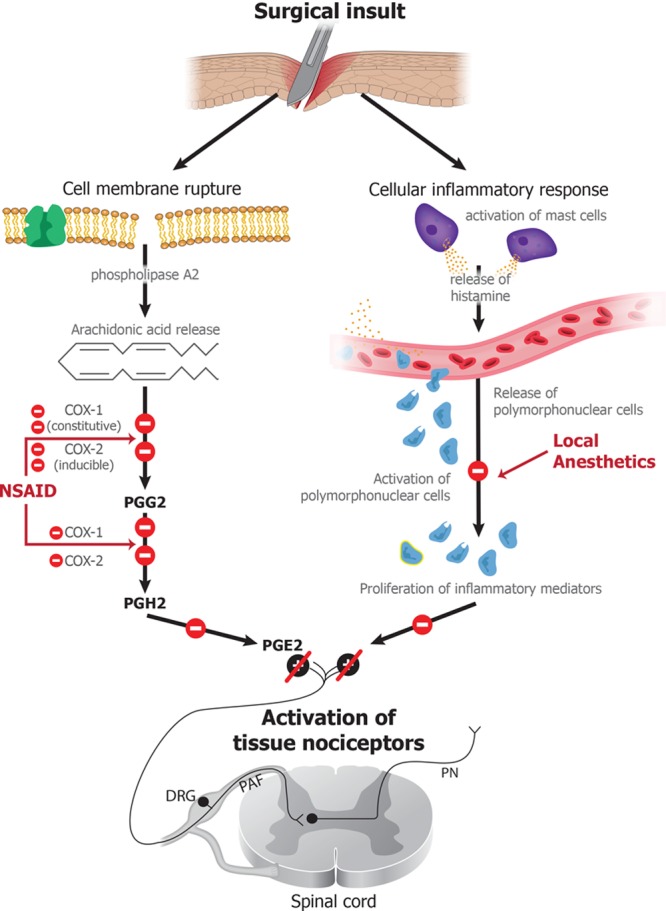Figure 5.

NSAIDs and lidocaine. Surgical insults induce rupture of cell membranes, leading to release of arachidonic acid, which, through the action of COX-1 and COX-2, is converted into prostaglandins, which are potent inflammatory and nociceptive mediators. NSAIDs modulate the nociceptive response by blocking the actions of COX-1 and COX-2, and lidocaine exerts their nociceptive effects by inactivating sodium channels, thus inhibiting excitation of nerve endings and blocking conduction of action potentials in peripheral nerves. Lidocaine also impedes neutrophil degranulation, thereby impeding the amplification of the inflammatory response. COX indicates cyclooxygenase; DRG, dorsal root ganglion; NSAID, nonsteroidal anti-inflammatory drug; PAF, peripheral afferent fiber; PGE2, prostaglandin E2; PGH2, prostaglandin H2; PGG2, prostaglandin G2; PN, projection neuron.
